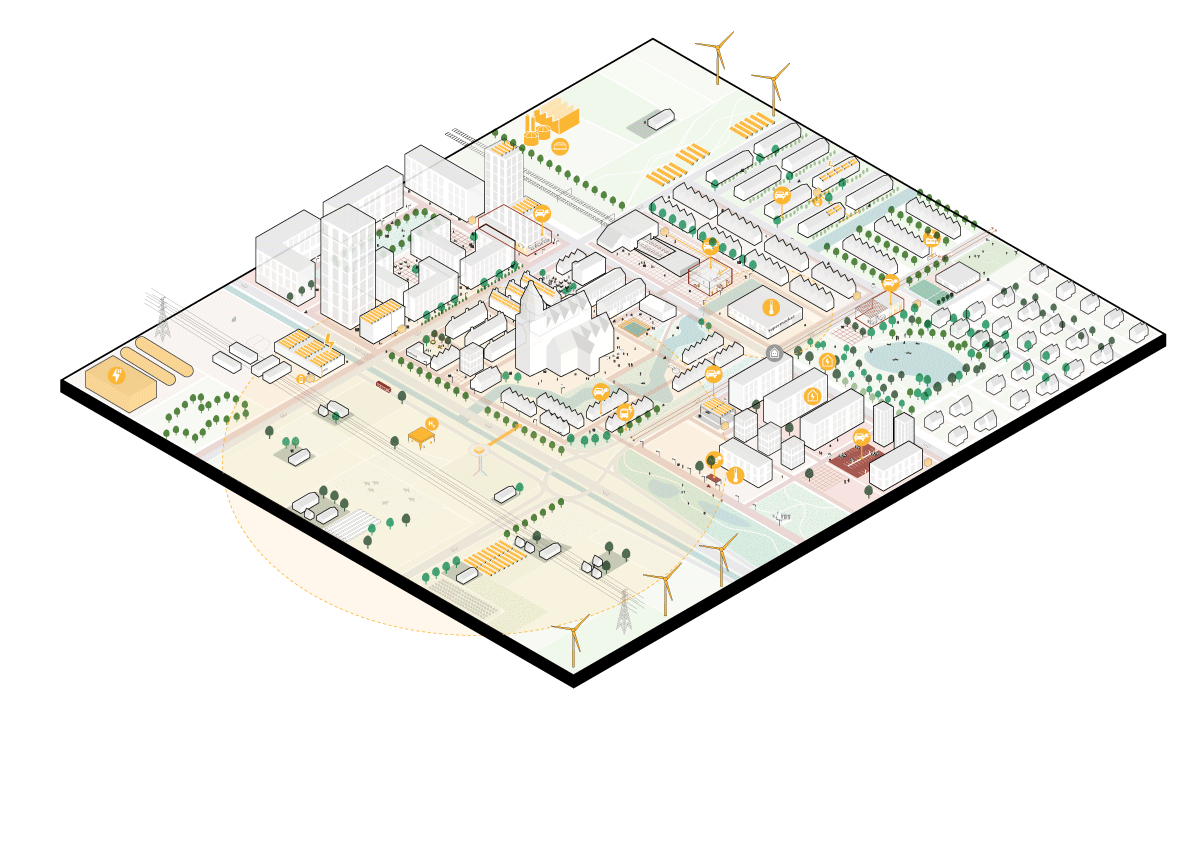| MULTIPLY | EUROPEAN | GUIDELINES |
| Most of the energy systems of the participating cities rely largely on fossil fuels and are usually a product of the geospatial conditions around the city. Changing the system is often challenging but could potentially lead to large savings in CO2 emissions. Changing the energy system of a city requires you to think about the production, storage and transportation of energy. Low carbon, renewable solutions often require a change in the whole chain. | Below are three strategies employed by the Multiply cities to make energy production more sustainable, click on each strategy to reveal specific solutions. |

Local networks
Transporting energy always leads to energy losses while centralized energy production may lead to economies of scale. More localized energy grids could be part of the balance between local production and distribution, making it easier to deal with temporary energy shortage or surplus.
Energy production
Most cities encounter a shift from a centralized (national) energy production system to a more decentralized system. Different solutions are proposed, ranging from stimulating inhabitants to facilitating larger energy collectives or developers. Making the local community part of a development is an important success factor.
Storage
Renewable energy sources like PV and wind turbines have a less stable energy output than conventional sources. When renewables will become more dominant, energy storage will become an important element of an energy system. Cities have proposed solutions to address this but most are in an idea phase and lack implementation. Further research is needed in order to be able to implement these solutions.